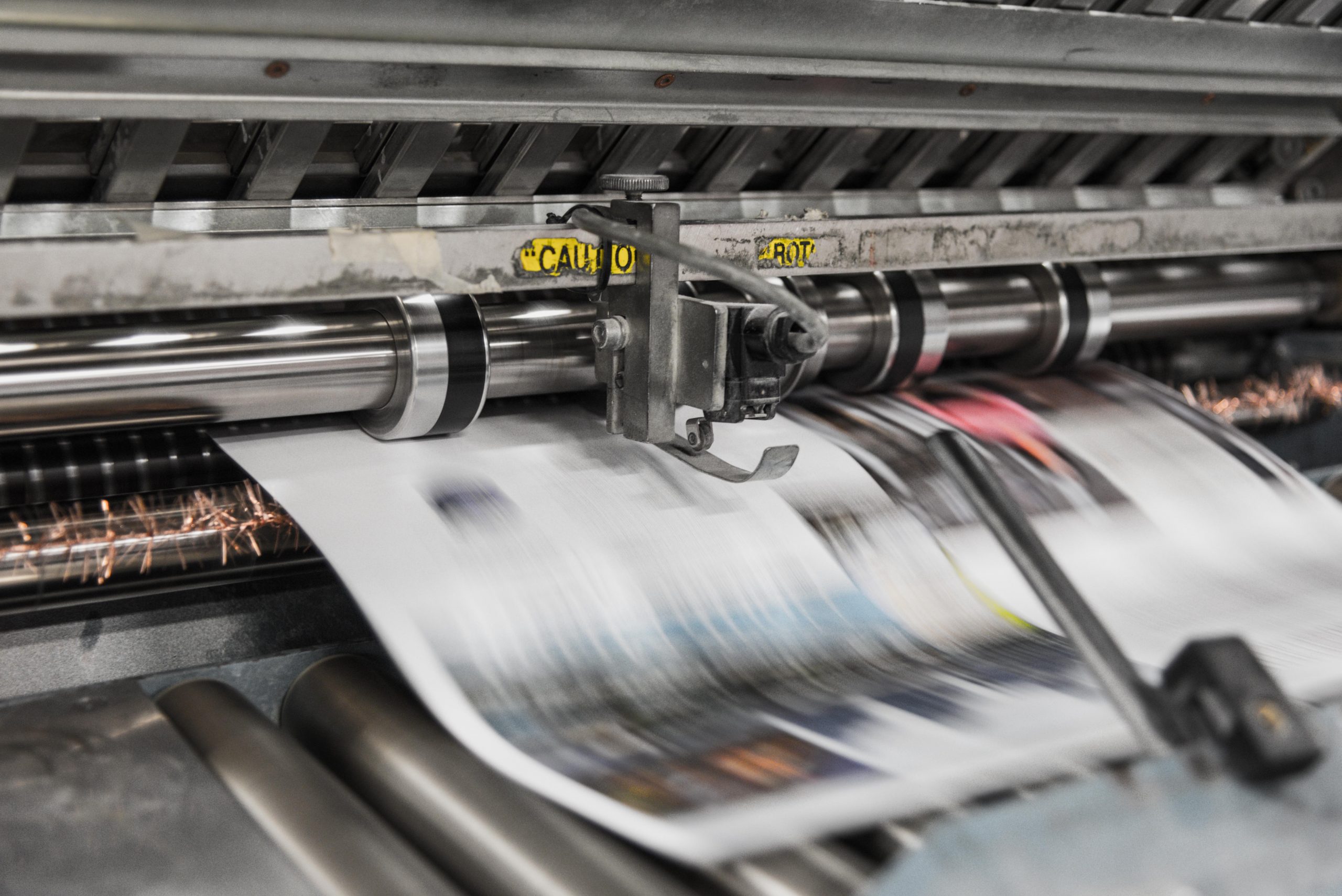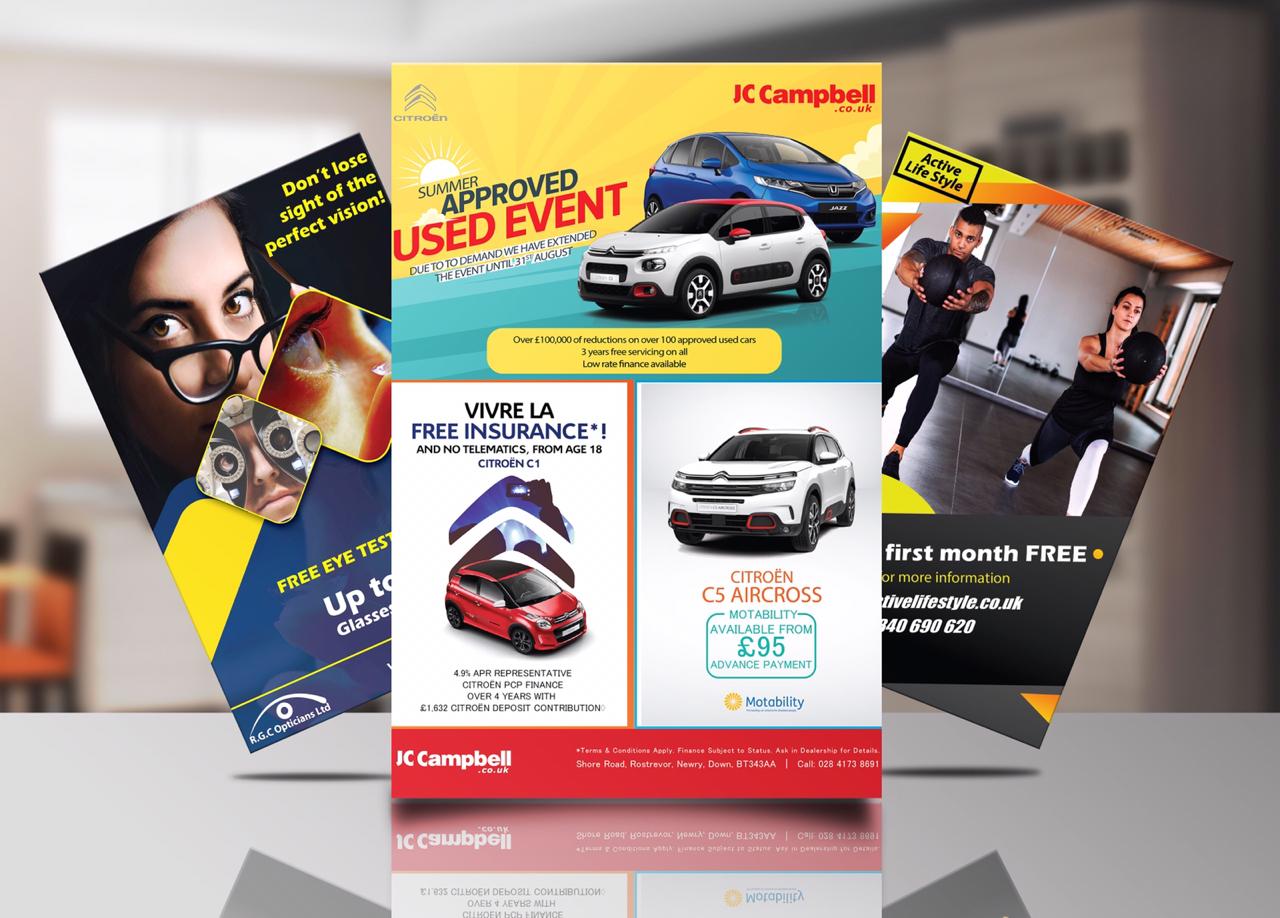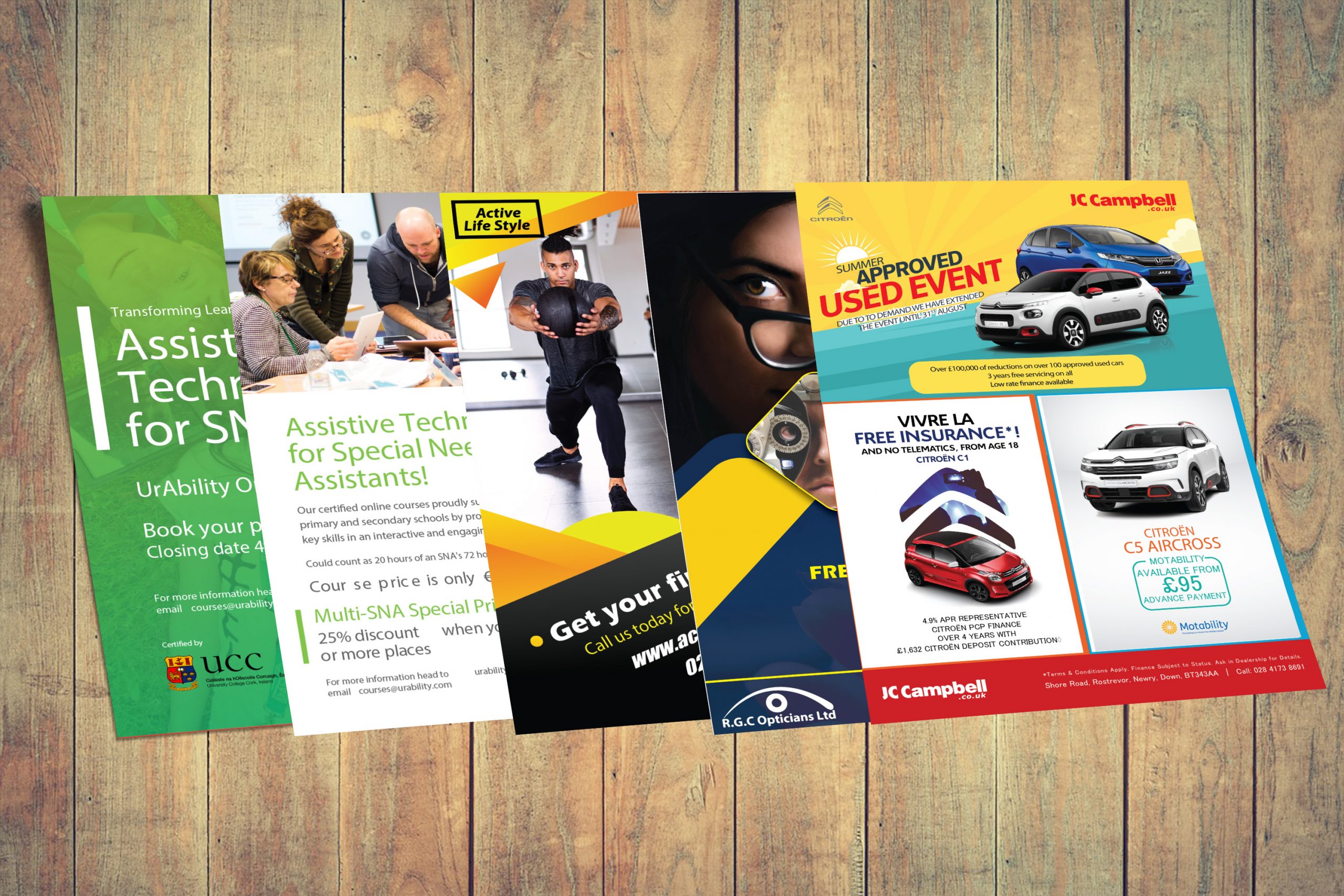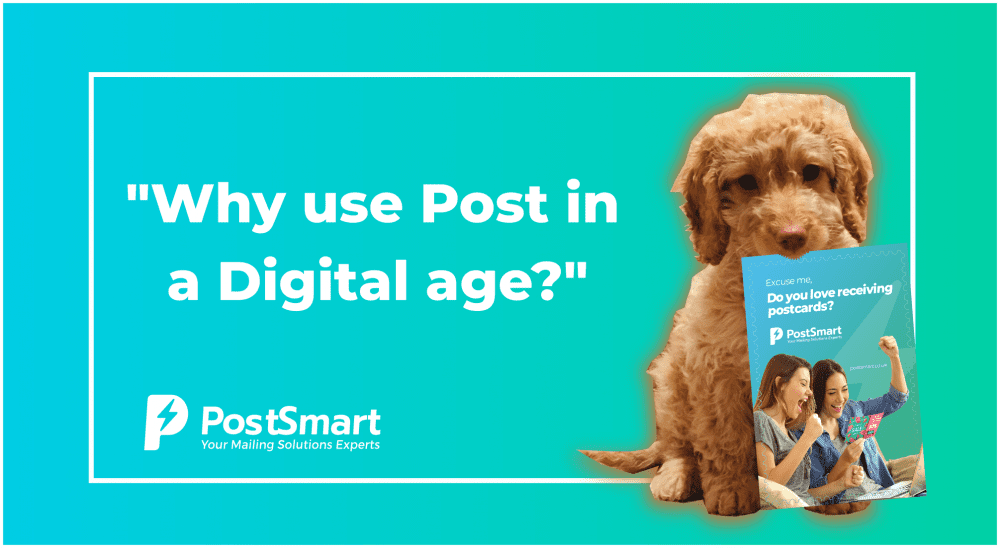Confused about what print finish to choose for your next Leaflet Distribution campaign?
It can be a bit daunting trying to decide what print finish or paper weight to choose if you don’t know what your options are or what they are mean. So, we thought we’d help make it easier for you with this blog which is filled with information on all the options and when and why you should choose them.
What are the different types of print finishes available?
There are a variety of coating finishes and specialised uncoated papers, but essentially all paper types fall into two categories; Coated and uncoated.
We’ve outlined their characteristics below:
Uncoated Paper:
This paper has a non-glare appearance and is absorbent. It has nothing covering the natural fibres and easily soaks up ink. Uncoated paper be can be textured, for example, a linen finish, but it can also be very smooth, like printer paper. Uncoated paper is the easiest to write on. Uncoated paper is generally used for the following:
- Stationery and standard envelopes
- Inexpensive flyers
- Newsletters
- A final product you can write on
Coated paper:
Coated paper has been covered with a hardened clay material so that it will better display text and images with sharper detail and denser colours. The coating can be non-shiny (matte), dull, gloss and cast coated (mirror-finish high gloss). Paper can be coated on one or both sides. Paper coated on one side is often used for producing low-cost postcards. Coated paper is perfect for the following campaigns:
- Brochures
- Catalogues
- Postcards
- Leaflets and flyers
Special Paper Coatings
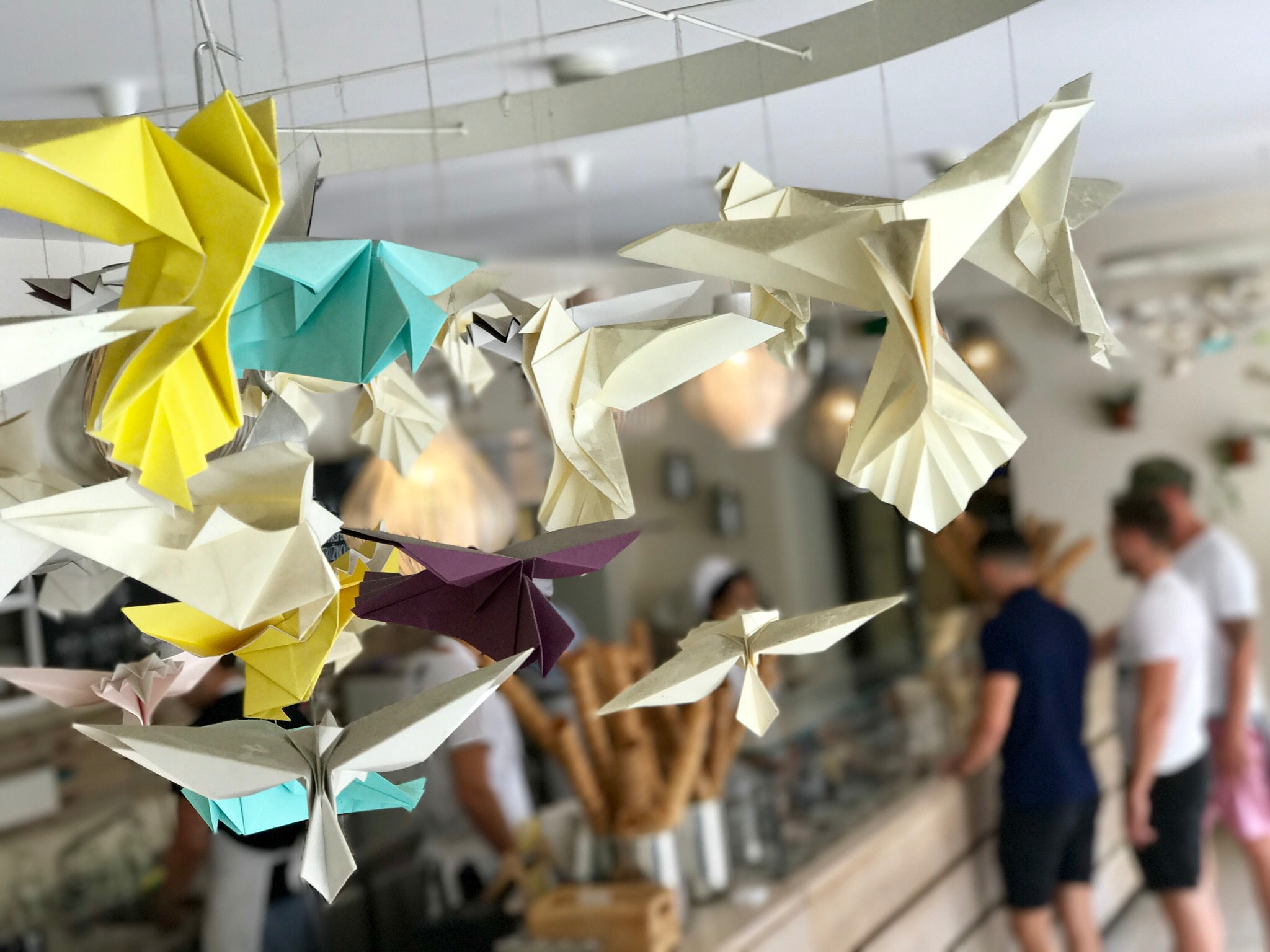
There is also a specialty coating that can be added after the direct mail piece has been printed. These can help protect the entire piece or can be used to create eye-catching effects to maximise impact.
For example;
Aqueous coating provides a high-gloss or matte look and offers outstanding protection.
UV coating uses ultraviolet light to quickly dry the coating and soft-touch coating can dramatically change the look and feel of a printed piece. Using a sport UV is a clever way to enhance certain areas of your design using a selective gloss effect for a great visual impression. UV coating really blows all other coating options away when it comes to gloss, only it comes at a premium cost.
Which finishing option should I choose?
When you place a print order for a leaflet distribution or direct mail campaign, you’ll typically have a choice of four paper finishes to choose from. The most common being Gloss, Silk, Matte and Uncoated. We have touched on the uncoated finishing above, so we’ll take you through the others in more details below.
Gloss paper
As the name suggests, gloss paper has a shiny coating. This method used to be a popular choice for door drop marketeers back in the day, however less so today. Unlike silk and uncoated, gloss is not commonly used for digital and lithographic printing as much as. However, we would recommend it to customers with artwork consisting of dark colours as uncoated stock tends to soak up the ink. It’s worth noting that you can’t easily write on gloss paper with a ballpoint as its shiny surface doesn’t give enough purchase for the ball to grip.
Silk Paper
Silk paper is a coated like gloss, only silk finish is somewhere between a gloss and a matt finish. Silk paper has a slight sheen to it, without having that mirror-like shine of a full gloss. It is by far the most popular paper that we print onto today – we’d estimate that about 90% of the posters, leaflets and flyers we print on coated stock go out on silk paper.
Matt Finishes
This will display the colours of a leaflet or flyer in a slightly paler effect, slightly duller in appearance, however it can provide a high class, sophisticated look and feel overall. A matt finish won’t grab attention with bright, shiny finish the way gloss leaflets or flyers would, however, it does display great quality and a subtle effect. This finish is very similar to a silk paper finish. In fact, a lot of printers and paper manufactures use the phrase silk, but matte is occasionally used to describe the same paper.
Uncoated Paper
As described above, uncoated paper doesn’t have a coating. For example, regular copier or printer paper is uncoated. It was once probably seen as being old fashioned or boring when the coated papers came onto the market but it’s now enjoying something of a renaissance.
Once you have decided on the finish now it’s time to select the appropriate weight of paper to use.
What paper weight should I choose for my leaflet distribution or door drop campaign?
Paper weight can have a huge impact on the quality of the final piece, and it can be confusing to know what weight to choose, so we would suggest seeking the advice of a professional.
However, we have below a suggested reference guide to help:
- 80-100 gsm – is the thickness of your standard office paper, and often used for newsletters, introduction letters, debt letters, donation forms etc.
- 110-120 gsm – is ideal for fancy stationery paper and the like.
- 130-170 gsm – ideal weight for flyers, posters and brochures.
- 170-200 gsm – is the preferred thickness for luxurious posters, double-sided flyers and brochure covers.
- 200-250 gsm – leans toward cardboard. This thickness is recommended for high-quality brochure covers.
- 300-400 gsm – is what you might call the cardboard category. Ideal for postcards and low to medium range business cards.
- 400+ gsm – is mostly selected for top-of-the-line business cards and other types of luxury prints.
Now you ready to place your order!
So, you’ve made the decision on what print finish and paper weight to use, now it’s time to place your print order for your next leaflet distribution or direct mail campaign.
Here at PostSmart, we can help save you time and money by providing a “One Stop Shop” solution where we print and deliver your order for you. In fact, we can help from concept right the way through to design, copy, print and delivery, so do get in touch with us today and find out how we can help take your business to the next level.
